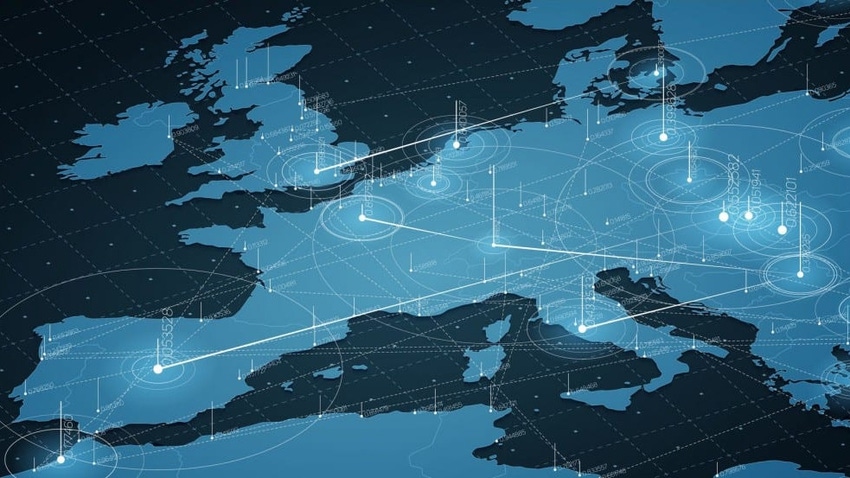EU OKs €1.2 billion of state aid for edge R&D
The EU has given its blessing for €1.2 billion worth of public funding to be spent on developing next generation cloud and edge infrastructure.
December 6, 2023

Seven member states – France, Germany, Hungary, Italy, the Netherlands, Poland, and Spain – will provide the money, which is expected to unlock a further €1.4 billion contribution from the private sector and create thousands of jobs.
The cash will fund 19 projects, with participation from 19 different companies including SMEs. The projects are divided between four different workstreams – cloud-edge continuum infrastructure; cloud-edge capabilities; advanced smart data processing tools and services; and advanced applications.
The contributing telcos are 4iG, Deutsche Telekom, Orange, Telefónica, TIM, and Tiscali Italia. IT software and services providers Atos and SAP are also involved, as is engineering giant Siemens. The EU said there are also 90 indirect partners contributing, and in addition to those seven funding members, Belgium, Croatia, Latvia, Luxembourg, and Slovenia are also involved.
The EU has designated this particular R&D effort as an Important Project of Common European Interest (IPCEI), which means governments can hand money over to companies without falling foul of the bloc's state aid rules.
There have been a few of these lately, including most recently in June, when the EU approved up to €8.1 billion of state aid to fund R&D relating to chip design and manufacture, with a particular focus on 5G and 6G, autonomous driving, AI, and quantum computing.
This latest one is called IPCEI Next Generation Cloud Infrastructure and Services (CIS).
Straying into word salad territory, the EU said the aim is to develop data processing capabilities, and software and data sharing tools that enable federated, energy-efficient and trustworthy cloud and edge distributed data processing technologies and related services.
This includes the development of open-source software that supports real-time, low-latency services delivered from edge clouds.
As for the timeline, the EU said the research, development and first industrial deployment phases will run between 2023 and 2031, with timelines varying depending on the project and the companies involved. Open-source reference infrastructure should be up and running by the end of 2027. During these phases, IPCEI CIS is expected to create at least 1,000 direct and indirect jobs, and many more during the commercialisation phase that follows.
"The IPCEI approved today is crucial to deliver breakthrough innovation on Cloud and Edge technologies that fulfil European requirements for interoperability, data privacy, sustainability and cybersecurity. It will also provide the technologies and solutions to reach our Digital Decade Strategy 2030 objectives: a 75 percent of cloud uptake by EU enterprises and more than 10,000 edge nodes across Europe," said EU internal market commissioner Thierry Breton. "With this IPCEI, Europe will reinforce its innovation leadership in next generation data processing services."
It's interesting that the EU has determined that a publicly-funded R&D initiative is necessary given the market is already well-established.
According to Canalys, in Q3 alone, global spending on cloud infrastructure came in at $73.5 billion. That should be enough to cover the R&D cost of next-gen cloud and edge tech.
It's not as if there is a dearth of cloud providers. By the simple act of addressing the insatiable demand from pretty much every sector of the economy, hyperscalers like Amazon Services (AWS), Microsoft and Google should be more than capable – both technologically and financially – of getting the EU to where it wants to be.
But we live in interesting times, where globalisation is firmly in retreat and data sovereignty is the order of the day for governments including the EU.
That might go some way to justifying all this effort; however, the private sector is smart enough to recognise an opportunity when it sees one.
Swedish start-up Evroc in June cited a lack of European hyperscalers as the motivation behind its €3 billion plan to build Europe's first two sovereign hypserscale data centres. Backed by private equity firm EQT, its long-term ambition is to have eight up and running by 2028, employing more than 3,000 people.
It begs the question then – from where has the need arisen for the EU to step in?
About the Author(s)
You May Also Like











_1.jpg?width=300&auto=webp&quality=80&disable=upscale)


.png?width=800&auto=webp&quality=80&disable=upscale)